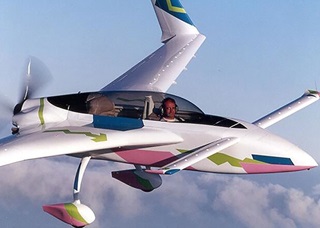
Experiments with vortex generators date to the 1930s, and benefits stemming from the airflow attachment they create are still being discovered and explored.
In November, Micro AeroDynamics Inc. celebrated 25 years of producing vortex generator kits for general aviation aircraft that increase lift, reduce stall speed, and improve control at low speeds—all for a few hundred to a couple of thousand dollars per kit, which can be installed in a day. The kits include virtually everything needed to affix the tiny aluminum fins to the wings and empennages of about 750 different aircraft models, and about 20,000 have been sold since 1989. Protruding about a quarter-inch, the fins are placed in precise locations and create tiny tornadoes, smaller versions of the wingtip vortices, that keep airflow over wings and control surfaces attached as angle of attack increases. The practical results are increased lift, improved control authority at low speeds, and, the company announced in May, higher service ceilings.
“It’s a benefit we hadn’t researched,” Micro AeroDynamics President Anni Brogan said in a news release that cited anecdotal evidence including a Cessna Skylane pilot who was able to climb to 22,000 feet (3,100 feet above the published service ceiling) and a Long EZ pilot who climbed above 35,000 feet to break a record. “We are not recommending that pilots take off to challenge the service ceiling of their aircraft, but it’s useful to know you may have a little more in the bank than you thought.”
A few weeks later, a June 8 press release noted that most Micro VG kits produced by the company include vortex generators for mounting on the horizontal and vertical tail surfaces, where enhanced airflow attachment increases elevator and rudder authority, respectively. Only six of the supplemental type certificates (included with each kit) exclude vortex generators for tail surfaces.
Brogan, in an email exchange, noted that manufacturers including Piper Aircraft, Thrush Aircraft, Maule Air, Diamond Aircraft, and, most recently, GippsAero (Mahindra Aerospace), have embraced vortex generators, ordering kits from the company for factory installation.
Brogan said there are more kits to come, though the company won’t announce which models are being tested with Micro VG installations until FAA approval, a process that has not been truncated by experience.
“Interestingly enough, although we have an established track record, the FAA personnel that are assigned as our project engineers seem to rotate away regularly, so our Micro VG project proposals always seem to be ‘new’ to them,” Brogan wrote.
AOPA Pilot Senior Editor Dave Hirschman installed a Micro VG kit on his RV-4 and reported the results in detail in 2013, all of them positive: The 48-piece kit (which includes everything needed for installation except a ladder, paper towels, and isopropyl alcohol for cleaning the working area) was applied on a Sunday afternoon, and Hirschman noted significant changes.
“VGs vastly improve slow-speed handling in the RV-4, provide much greater aerodynamic warning of an impending stall, and raise the critical angle of attack at which the wing stalls to an almost comical 20.5 degrees with flaps deployed (from about 15 degrees),” Hirschman wrote. “On the fast end of the speed spectrum, there’s no downside at all.”

Kits for many popular certified single-engine aircraft such as the Cessna 172 and Piper Cherokee cost $1,450; various twins can be fitted with kits costing around $2,000 or a little more, while kits made for experimental aircraft including Hirschman’s RV, the Long EZ flown by Jim Price in his high-altitude record bid, and the Murphy Rebel cost $395.
Brogan noted that airline transport and military aircraft have also benefitted from vortex generators over the years, and the company’s entry into the general aviation market was inspired by founder Charles White’s tour of the Boeing factory in the 1980s. White asked the tour guide about the tiny vertical fins he saw on a Boeing 767 wing.
“After Mr. White shared that he was flying a Baron, the tour guide indicated that in the 1950's Boeing worked with NASA to reduce stall speed with vortex generators by mounting them about 10 [percent] aft, rather than the farther aft installation seen on the Boeing jets,” Brogan wrote.
In 2002, Piper contracted with Micro AeroDynamics for a kit to increase the gross weight of the Meridian, after a previous effort by NASA had fallen short of the stall speed required for certification at heavier weight. Piper flew a Meridian to the Micro AeroDynamics headquarters in Anacortes, Washington, and engineers there succeeded in the effort, increasing the gross weight of Meridians after serial number 4697156, Brogan wrote. “We still ship kits directly to Piper each month.”



